Home Tags Posts tagged with "eurostat"
eurostat
The eurozone economy expanded by 1.5% in 2015, the statistics agency Eurostat has announced.
In Q4 of 2015, the 19 countries that use the euro grew 0.3%, compared with the previous three months, Eurostat has said.
The 28 countries of the EU also grew 0.3% in Q4, to a GDP growth rate of 1.8% for the full year.
Growth slowed during 2015, suggesting that more action may be needed to stimulate economies from the European Central Bank (ECB).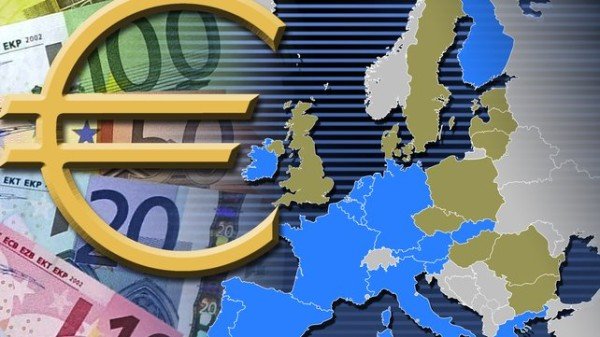
Eurostat also announced on February 12 that industrial production had fallen 1% in December compared with the previous month, both for the eurozone and the EU.
Year on year, it fell 1.3% in the eurozone and 0.8% in the EU.
The biggest contraction in GDP came in Greece, where the economy shrank 0.6% in Q4 of 2015, which was better than had been expected.
However, the contraction in Q3 turned out to have been bigger than previously thought, being revised from 0.9% to 1.4%.
Germany’s economy expanded by 0.3% in Q4 of 2015 to an annual rate of 1.7%.
The German statistics agency said that government spending was “markedly up”, while household consumption rose slightly.
The figures follow surprisingly poor industrial production data for December 2015.
The eurozone inflation returned to zero in October 2015 from (-0.1%) in the previous month.
According to Eurostat estimates, price growth in food, alcohol and tobacco increased slightly, while energy prices were still considerably lower than last year.
The EU statistics agency also estimated the unemployment rate in the 19 countries that use the euro was 10.8% in September, down from 10.9% in August.
The rate for the 28 EU members was 9.3%, down from 9.4% the month before.
The eurozone rate is the lowest since January 2012 while the rate for the whole EU is the lowest since September 2009.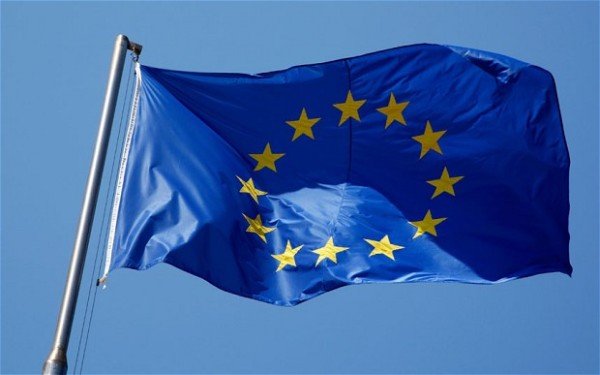
Greece had the highest rate at 21.6%. The country is expected to be higher but has yet to report September figures, while Germany had the lowest at 4.5%.
The inflation figures are an early, flash estimate from Eurostat and so are not broken down by member state.
It does give broad indications of which groups of products have gone up or down.
Food, alcohol and tobacco prices were estimated to be rising 1.5% in October, compared with 1.4% in September.
Energy prices were falling an annual 8.7%, compared with 8.9% a month earlier.
Services prices were up 1.3% compared with 1.2% the month before.
European Central Bank President Mario Draghi suggested this month that he might be prepared to extend the bank’s program of quantitative easing given the low levels of eurozone inflation.
Eurozone unemployment fell in July 2015 to its lowest rate in more than three years, Eurostat figures have shown.
According to the EU statistics agency, the unemployment rate in the currency union fell to 10.9% in July from 11.1% the month before.
The fall was helped by a sharp fall in Italy’s unemployment, where the jobless total fell by 143,000.
It is the first time the unemployment rate in the eurozone has been below 11% since February 2012.
The wider 28-member EU saw the unemployment rate fall to 9.5%, the lowest rate since June 2011.
The lowest unemployment rate was in Germany, at 4.7%. Greece had the highest unemployment rate, at 25%, the latest available data from May showed, followed by Spain at 22.2%.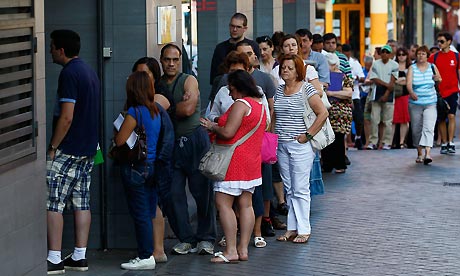
The rate of youth unemployment across the eurozone also declined to 21.9% in July from 22.3% a month earlier.
A survey released earlier on September 1 suggested that growth in the eurozone’s manufacturing sector had eased slightly in August, despite factories barely raising prices.
The closely-watched Markit eurozone manufacturing purchasing managers’ index (PMI) was 52.3 last month, below a preliminary reading that suggested it had held steady at July’s reading of 52.4. However, it has remained above the 50 mark that separates growth from contraction for more than two years.
There was some good news within the data. Germany, the Netherlands, Ireland and Italy all saw strong growth, with Germany’s manufacturing PMI reading jumping to 53.3 in August from 51.8 a month earlier.
The manufacturing figures come almost six months into the European Central Bank’s (ECB) €60 billion-a-month bond-buying program designed to inject new life into the eurozone economy and combat low inflation, which is currently sitting at 0.2%.
With inflation still far from the ECB’s target rate of just below 2%, and looking likely to stay there for the foreseeable future, speculation is growing the bank will have to extend its stimulus program beyond the planned completion in September 2016.
Eurozone has emerged from recession after a record 18 months of economic contraction.
According to the Eurostat agency, eurozone’s GDP grew by 0.3% in the second quarter of 2013, slightly ahead of forecasts.
The growth was widely expected after the German economy rose 0.7% between April and June.
However, the overall figure masks the mixed economic fortunes among the countries that make up the 17-country eurozone area.
Germany and France both posted stronger-than-expected growth, expanding 0.7% and 0.5% respectively.
Portugal, among the smallest and the weakest eurozone economies, showed the fastest growth, at 1.1%.
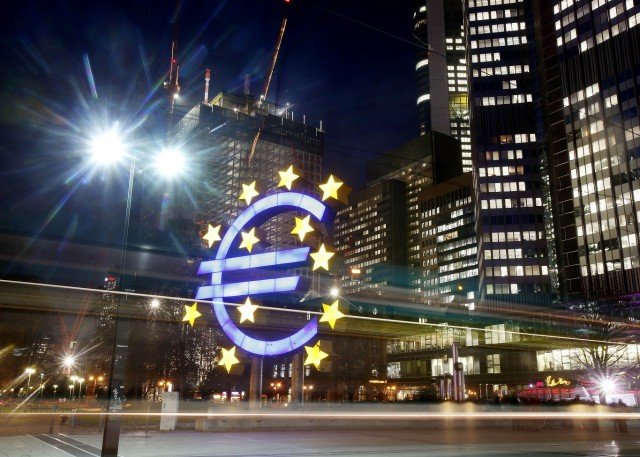
Eurozone has emerged from recession after a record 18 months of economic contraction
The country was one of three that had to take a multi-billion-euro bailout.
But Spain, which had to seek outside support for its struggling banking sector, saw its economic output fall by 0.1% on the quarter.
Italy and the Netherlands both saw output drop by 0.2%.
European Commission Vice-President Olli Rehn said the figures suggested the European economy was gradually gaining momentum, but added there was no room for complacency.
“There are still substantial obstacles to overcome: the growth figures remain low and the tentative signs of growth are still fragile,” he said.
“A number of member states still have unacceptably high unemployment rates; the implementation of essential, but difficult reforms across the EU is still in its early stages. So there is still a very long way to go.”
Analysts from Capital Economics said: “The return to modest rates of economic growth in the eurozone as a whole won’t address the deep-seated economic and fiscal problems of the peripheral countries.”
The figures reaffirm Germany’s position as the powerhouse behind the eurozone.
Germany narrowly avoided recession earlier this year, but GDP in the second quarter of 2013 was driven up by demand from both consumers and businesses.
The improvement comes just weeks before a federal election that will see Chancellor Angela Merkel stand for a third term in office.
[youtube EMZxxhZ6YlQ]
According to official figures, eurozone unemployment rate has reached another record high in April 2013.
The seasonally-adjusted rate for April 2013 was 12.2%, up from 12.1% the month before.
An extra 95,000 people were out of work in the 17 countries that use the euro, taking the total to 19.38 million.
Both Greece and Spain have jobless rates above 25%. The lowest unemployment rate is in Austria at 4.9%.
The European Commission’s statistics office, Eurostat, said Germany had an unemployment rate of 5.4% while Luxembourg’s was 5.6%.
The highest jobless rates are in Greece (27.0% in February 2013), Spain (26.8%) and Portugal (17.8%).
In France, Europe’s second largest economy, the number of jobless people rose to a new record high in April.
“We do not see a stabilization in unemployment before the middle of next year,” said Frederik Ducrozet, an economist at Credit Agricole in Paris.
“The picture in France is still deteriorating.”
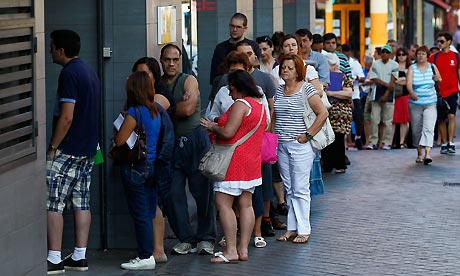
Eurozone unemployment rate has reached another record high in April 2013
Youth unemployment remains a particular concern. In April, 3.6 million people under the age of 25 were out of work in the eurozone, which translated to an unemployment rate of 24.4%.
Figures from the Italian government showed 40.5% of young people in Italy are unemployed.
“We have to deal with the social crisis, which is expressed particularly in spreading youth unemployment, and place it at the centre of political action,” said Italy’s President Giorgio Napolitano.
In the 12 months to April, 1.6 million people lost their jobs in the eurozone.
While the jobless figure in the eurozone climbed for the 24th consecutive month, the unemployment rate for the full 27-member European Union remained at 11%.
The eurozone is in its longest recession since it was created in 1999. At 1.4%, inflation is far below the 2% target set by the European Central Bank (ECB).
Consumer spending remains subdued. Figures released on Friday showed that retail sales in Germany fell 0.4% in April compared with the previous month.
Earlier this week, the Organization for Economic Co-operation and Development (OECD) predicted that the eurozone economy would contract by 0.6% this year.
According to Carsten Brzeski, an economist at ING, in the past, the eurozone has needed economic growth of about 1.5% to create jobs.
Some consider that the ECB needs to do more than simply cutting interest rates to boost economic activity and create jobs.
Earlier this month, the ECB lowered its benchmark interest rate to 0.50% from 0.75%, the first cut in 10 months, and said it was “ready to act if needed” if more measures were required to boost the eurozone’s economic health.
In its report earlier this week, the OECD hinted that the ECB might want to expand quantitative easing (QE) as a measure to encourage stronger growth.
The European Central Bank is due to meet next week.
[youtube tKUT_jY0uqo]
Eurozone unemployment rate reached new record high of 12% in February 2013, according to the official figures.
The number of people unemployed in eurozone, which includes 17 states, rose by 33,000 during February 2013, to hit 19.07 million, the statistics agency Eurostat said.

Eurozone unemployment rate reached new record high of 12 percent in February 2013
The highest rate was 26.4% in Greece, although the most recent figure for the country was from December.
The new figures from Eurostat have also confirmed a deterioration in the eurozone’s manufacturing sector in March.
The final Markit manufacturing PMI index for the month fell to 46.8, slightly higher than an initial estimate but below the 47.9 recorded in February.
Any score below 50 indicates a contraction in the sector.
Eurozone unemployment rate rose to a new record high in January, official figures show.
The jobless rate in the 17 countries that use the euro rose to 11.9% in January from 11.8% in December, the statistics agency Eurostat said.
The highest rate was 27% in Greece, although the most recent figure there was from November, while the lowest rate was 4.9% in Austria.
Eurostat also said eurozone inflation had fallen to 1.8% in February.
The inflation figure was the lowest for two years, putting it in line with the European Central Bank’s (ECB) inflation target of below, but close to 2%.

The jobless rate in the 17 countries that use the euro rose to 11.9 percent in January 2013 from 11.8 percent in December 2012
Analysts said that the high unemployment and low figure for inflation would make it more likely that the ECB would cut its interest rates later in the year from the current rate of 0.75%.
“All the data is supporting a rate cut, which we see in the second quarter,” said Sarah Hewin from Standard Chartered.
“They could move as early as next week, but there’s an element of the ECB wanting to keep its powder dry as we enter an uncertain political situation with Italy and the Cypriot debt question has to be resolved.”
The highest unemployment rates among countries that have reported their January figures were 26.2% in Spain and 17.6% in Portugal.
Unemployment in the 27 countries that make up the European Union rose to 10.8% in January from 10.7% the previous month.
Eurozone unemployment rate hit to a new high of 18.49 million in September, the EU statistics agency has said.
The number of people out of work rose by 146,000, pushing the unemployment rate up to 11.6%. This compares with 10.3% a year earlier.
The highest unemployment rate was recorded in Spain, where 25.8% of the workforce is out of a job, and the lowest of 4.4% was recorded in Austria.
In Spain and Greece, more than half the workforce aged under 25 has no job.
The lowest youth unemployment rate of 8% was recorded in Germany, where 5.4% of the overall workforce is out of work.
The eurozone as a whole is struggling to generate the economic growth needed to stimulate employment. Its economy shrank by 0.2% between April and June, with Italy and Spain stuck in recession and France registering no growth for the past three quarters.
The notable exception is the German economy, Europe’s biggest, which grew by 0.3% in the second quarter.
Growth there is expected to slow when preliminary figures for eurozone GDP between August and October will be published on 15 November.
Across the wider 27-nation European Union, unemployment rose by 169,000 to 25.75 million people, Eurostat said, with the unemployment rate rising slightly to 10.6%.
September unemployment rates
• Spain: 25.8%
• Portugal: 15.7%
• Italy: 10.8%
• France: 10.8%
• Germany: 5.4%
• Eurozone: 11.6%
• US: 7.8%
• Japan: 4.2%
Source: Eurostat
The economy of the eurozone shrank 0.2% in the three months from April to June compared with the previous quarter.
The figures from Eurostat covering the 17 countries that use the euro followed zero growth in the previous quarter.
Europe’s biggest economy, Germany, grew by 0.3% in the second quarter, helped by exports and domestic consumption.
France announced its economy had recorded zero growth in the period, which was better than had been expected.
The French economy had also posted zero growth in the previous two quarters.
GDP measures the total amount of goods and services produced by an economy.

The economy of the eurozone shrank 0.2 percent in the three months from April to June compared with the previous quarter
“Germany has asserted itself thanks to growing exports to countries outside the eurozone,” said Christian Schulz at Berenberg Bank.
“It’s hardly a surprise that consumption has increased due to low unemployment, rising wages and a low rate of inflation.”
The economies of the 27 members of the EU also contracted by 0.2%.
Among the eurozone’s biggest contractions, Portugal’s GDP shrank 1.2%, Cyprus recorded a 0.8% contraction and Italy was down 0.7%.
Comparable figures from Ireland and Greece are not yet available.
On Monday, Greece released GDP figures that showed its economy contracted by 6.2% in the second quarter, compared with the same period a year earlier, but did not provide figures for the quarter compared with the previous quarter.
The first quarter’s zero growth means the eurozone is still not in recession on the generally accepted definition of two consecutive quarters of negative growth, but the outlook for the rest of the year is gloomy.
“What we see is a vicious circle of budget cuts, high interest rates in the periphery and sovereign debt rising,” said Aline Schuiling at ABN Amro.
“Policymakers are moving very slowly. We expect another contraction in Q3.”
Greece, Spain, Italy, Cyprus and Portugal, all of which are receiving assistance from European bailout funds, are in recession.
“Overall, the story of a resilient core and a floundering periphery continues,” said Azad Zangana at Schroders.
“The resilience of the core economies is likely to be tested in the coming quarters, with leading indicators suggesting slowing order books and falling business confidence.”
An example of the leading indicators was the ZEW index of investor sentiment in Germany, which has declined for the fourth consecutive month to its lowest level this year.








